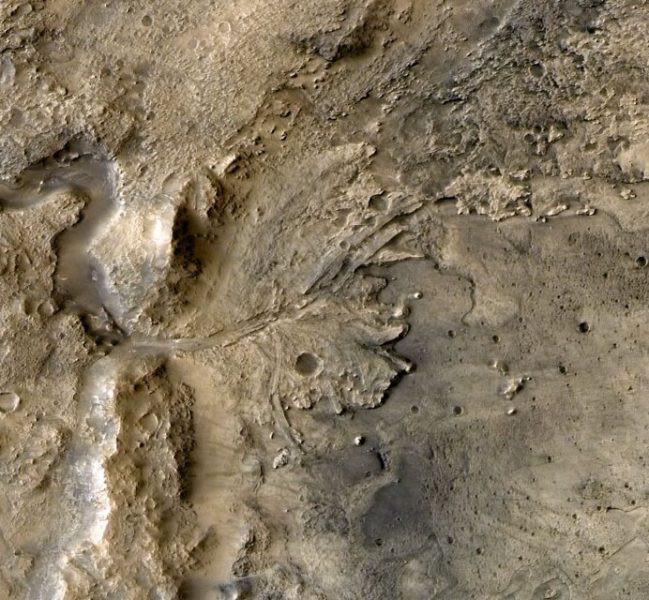Make Your Own Mars
November 12, 2020

In July 2020, the Mars 2020 mission set off for Jezero Crater.
Although it will be about another seven months before the mission rover touches down on the Red Planet, you can get to know the landing site ahead of time with a model of the crater that you can 3D-print yourself.

Researchers at The University of Texas at Austin created the model files by converting elevation data from the crater into a file that can be read by a 3D printer. The file is available for download. The team behind the model consists of Jackson School of Geosciences Assistant Professor Tim Goudge; Professor John Kappelman, who holds appointments at the Jackson School and College of Liberal Arts; and Jackson School alumnus Michael Christoffersen.
Christoffersen developed the open-source software for converting the elevation data while he was an undergraduate at the Jackson School. The crater’s elevation data came from the Mars Reconnaissance Orbiter, a satellite orbiting the Red Planet.

The model shows the amazing landscape that awaits the NASA rover. It includes sharppeaked mountains that form the crater’s rim, a valley carved by an ancient river, and the river delta’s fan of sediments — which the Mars 2020 rover will sample for potential microfossils that would show that the Red Planet was home to life billions of years ago. The model can be scaled up or down, but the standard size is about 8 by 7. inches, about 100,000 times smaller than the area it represents on Mars. The landforms correspond to those on Mars, but the researchers increased their scaled-down height by five times so details would be easier to see and feel.
The model’s size means it is right at home on a desk or bookshelf (which is where Goudge keeps his copy). But Goudge, who was the lead advocate for Jezero as the Mars 2020 landing site, said that he envisions the replica, first and foremost, as a teaching tool. In a world where space news is dominated by pictures, he said that the model could help people with visual impairments engage with Mars exploration.
“Everybody can get something out of this, and it makes it more accessible to everyone,” he said.
Back to the Newsletter